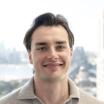Three years ago, very few Australians knew what BYD was. Now, it is fast becoming a household name.
Take a look at its sales history since it arrived in Australia in 2022. That year, BYD clocked some 2213 sales. The following year, 12,438. Last year? 20,458.
It’s all part of the brand’s exponential growth strategy, backed up by a huge product pipeline, according to David Smitherman, the CEO of BYD’s local distributor, EVDirect.
"Our business strategy is very clear, we are product led. We have incredible amounts of product coming out of China," he said.
“We’ve always said our goal is to double volume [in Australia] each year."
Despite falling 4418 sales short of achieving the feat last year, BYD was without what is shaping up to be arguably its most popular model, the plug-in hybrid Shark 6 ute, which suffered from supply shortages linked to industrial action across Australia’s ports.
Now that deliveries are finally underway, nearly three months after the car’s official launch, it is also set to be joined by the fully-electric Sealion 7 next month, a key rival to the Tesla Model Y in the increasingly popular mid-sized electric SUV segment.

Then there’s the Yangwang and Denza sub-brands, both of which have been confirmed for Australia.
The latter consists of the Denza B5, a compact, plug-in hybrid Toyota Prado challenger, which has already been spotted testing in Sydney.
It doesn’t stop there, either. BYD collectively boasts some 55 models in China, and according to Smitherman, virtually nothing is off limits for Australia.
“BYD sold 4.27 million [plug-in hybrids and EVs] in China last year and if you look at the stats that's just so much more than any other new energy vehicle brand out there."
"In my role, I’m saying let's get lots of products to Australia to meet every segment."
Despite the vast majority of those vehicles being sold in China, BYD sold significantly more vehicles than EV-only brand Tesla, who sold 1.78 million electric cars in 2024, roughly 20,000 more than BYD.
Tesla doesn't face trade barriers in the US and Europe, though, which is why BYD is increasingly asserting itself in alternative overseas markets such as South America, Asia and Australia.
"BYD has got a huge appetite for Australia and is very keen to bring [more] product to the market," said Smitherman
It’s for that reason, along with Smitherman's faith in the brand and its cars, that he believes it can be a top-ten player by year’s end.
“Yes, absolutely,” he said when asked if BYD can achieve the feat in 2025.

Should it do so, it could knock Chinese rival GWM off its recently assumed position as Australia’s 10th best-selling car brand after clocking 42,728 sales in 2024 – its 15th year of local sales.
It could also keep Tesla from reassuming a top-ten position after it fell from Australia’s 8th most popular car brand in 2023 to 12th in 2024 with a sales decline of 16.85 per cent.
It won’t come easily, though.
The Australian market is the most competitive it's ever been, with a lack of domestic manufacturers and tariffs to protect them paving the way for several Japanese, South Korean, European, American, and increasingly, Chinese brands to fight over the market.
“We know it's a tough market and there’s a lot of tough competition out there. We’ve got to be on our game and there’s a lot of work to be done, we don’t say that flippantly, but the strength of this brand is significant and we’re certainly pushing hard," said Smitherman.
That’s why it has moved to slash prices across its model range, including adding more affordable Essential grades to its Dolphin and Atto 3 ranges, with other models likely to follow suit.
The result has been Australia’s first EV with a sticker price of under $30,000: the BYD Dolphin Essential.
It’s a strategy the brand hopes will shore up or even grow EV demand in Australia, which has proven a little shaky in the last 12 months as the popularity of hybrid vehicles surged.
“These Essential range EVs, I think that’s going to help propel an increase in [EV] sales,” said Smitherman.
BYD also boasts a strong plug-in hybrid range, national demand for which grew 100.2 per cent across the segment last year, largely off the back of its Sealion 6 – the top-selling PHEV in the country.

If required, Smitherman said the brand can quickly add more PHEVs to its line-up.
“We’re very flexible… I like to think that both EV and PHEV will get substantial focus from our business because I want to make sure we can meet the needs of a diverse range of Australians.”
And with Australians increasingly adopting both plug-in hybrid and electric vehicles, it appears there is nothing stopping BYD.





.jpg)
.jpg)

.jpg)
_0.jpg)


.jpg)



.jpg)
.jpg)



.jpg)

.jpg)




